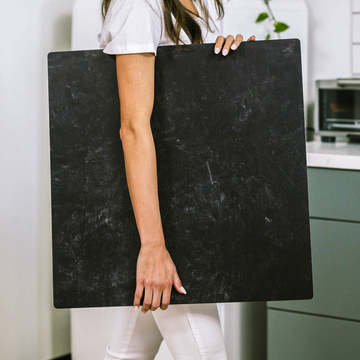I still remember the day I realized my flat lay photography was missing something. It was 2014, and a client had rejected my product shots for their jewelry line. "These just don't pop like the reference images," they said. After hours of frustration, I discovered the truth: it wasn't my creative eye that was lacking-it was my technical setup.
Over the decade since that humbling moment, I've refined a professional flat lay kit that has served clients from indie Etsy shops to major retail brands. Today, I'm pulling back the curtain on what actually separates scroll-stopping flat lays from forgettable ones-and it's not what most photographers think.
Why Your Flat Lay Kit Deserves a Serious Upgrade
We've all double-tapped those seemingly effortless overhead shots-products arranged just so, lighting that creates perfect definition, and backgrounds that enhance without distracting. What most don't see is the meticulously engineered system behind these "simple" images.
After teaching workshops to hundreds of photographers and content creators, I've noticed the same revelation on their faces when they switch from cobbled-together setups to a properly configured professional kit: "I've been making this so much harder than it needed to be."
Surface Selection: The Underappreciated Foundation
Early in my career, I shot on whatever flat surfaces I could find-wooden tables, marble countertops, even painted foam board from craft stores. These work in a pinch, but professional flat lay photography demands more technically sophisticated surfaces.
What Sets Professional Surfaces Apart:
- Engineered Reflectance Values: The best surfaces reflect precisely the right amount of light-typically between 40-60% reflectance. This sweet spot prevents both muddy shadows and blown highlights, creating that dimensional look that makes products appear to "lift" off the surface.
- Color Neutrality Under Various Light: I once shot a white ceramic collection that appeared slightly blue in every image, forcing hours of post-processing corrections. Professional-grade surfaces maintain true color neutrality under different lighting conditions-critical when color accuracy affects purchase decisions.
- Multi-Layer Construction: The surfaces I rely on now incorporate scratch-resistant matte finishing layers that diffuse light evenly while standing up to constant styling and restyling. This seemingly small detail becomes enormous when you're on your 40th product of the day.
Lighting Control: The Professional Difference
During portfolio reviews, I can immediately spot photographers working with consumer lighting versus professional systems. The difference isn't about price-it's about precision control.
Elements of a Professional Lighting Setup:
- Variable Diffusion Systems: Rather than one-size-fits-all softboxes, I use adjustable diffusion panels that can be modified based on what I'm shooting. The soft, wrapping light that makes ceramics look dimensional will make metal jewelry look flat-having this flexibility prevents constant troubleshooting.
- Repeatable Positioning: For a recent skincare campaign, I needed to shoot 36 products with identical lighting over three separate sessions. My mounting system with measured markings allowed me to recreate exact positioning weeks apart-something impossible with basic light stands.
- Color Temperature Control: Our eyes quickly adjust to color temperature shifts, but cameras don't. My kit includes calibration tools that ensure my whites are truly white and brand colors are consistent across every image-essential when building product collections online.
Camera Positioning: The Details That Matter
After upgrading hundreds of photographers' setups, I've found camera positioning is where most struggle unnecessarily.
Professional Mounting Solutions Include:
- Micrometric Height Adjustment: Being able to adjust camera height in 1mm increments transforms how you compose flat lays. With fine control, you can perfectly frame collections of different-sized products without constantly restyling the entire scene.
- True Perpendicularity Tools: Even a 2-degree deviation from perfectly perpendicular creates subtle distortion that makes products look asymmetrical. My overhead rig incorporates digital angle finders to ensure true alignment-a detail that separates amateur from professional results.
- Stability Under Duration: During a recent 8-hour shoot day, my assistant bumped into my old tripod setup, forcing us to restart an entire sequence. Professional mounting systems maintain rock-solid positioning even during extended sessions with multiple people moving around the set.
The Workflow Integration That Changed Everything
The secret that transformed my productivity wasn't any single piece of equipment-it was how the entire system works together in a seamless workflow:
- Pre-Visualization Tools: Before I arrange a single product, I use grid templates designed specifically for my surfaces to plan compositions-eliminating the endless tweaking that consumed my early career.
- Tethered Shooting System: Connecting directly to editing software allows me to evaluate technical details in real-time on a calibrated display, making micro-adjustments to focus, exposure, and styling before moving forward.
- Integrated Reference Systems: My kit includes color calibration tools and removable scale references that fit my workflow, ensuring consistency across projects and significantly reducing post-processing time.
The Evolution: Dynamic Flat Lays
The most exciting addition to my professional kit addresses the changing landscape of digital content:
- Programmable Movement Systems: Using lateral motion rails integrated with my overhead rig, I create subtle animations while maintaining perfect overhead perspective-essential for social content that needs to stop the scroll.
- Focus Stacking Automation: For arrangements with varying heights (like a skincare collection with tall bottles alongside flat jars), automated focus bracketing ensures tack-sharp results throughout the entire composition.
Why This Technical Foundation Matters
After photographing thousands of products across every category imaginable, I've found this truth: technical precision creates creative freedom. When you're not constantly troubleshooting lighting issues or fighting with inconsistent results, you can focus on telling visual stories that connect with your audience.
Whether you're photographing handcrafted ceramics for your Etsy shop or creating content for national campaigns, investing in a properly configured flat lay kit isn't just about taking prettier pictures-it's about building a technical foundation that supports consistent, efficient visual storytelling that converts viewers into customers.
What part of your flat lay setup has made the biggest difference in your work? Or what technical challenges are you still trying to solve? I'd love to hear your experiences in the comments below!



